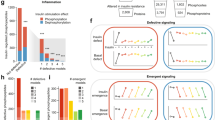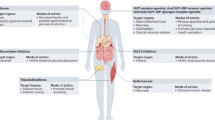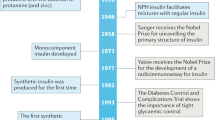Abstract
Insulin is a key anabolic hormone that plays a crucial role in growth, differentiation and metabolism. Insulin action is initiated by the binding of the hormone to its tyrosine kinase cell surface receptor, leading to the multisite autophosphorylation of the receptor. This results in the activation of the receptor kinase and subsequent tyrosine phosphorylation of insulin receptor substrates, most of which are docking proteins for signaling molecules. For the last several years, our laboratory has been interested in the mechanisms that lead to the modulation of insulin signal transduction, and hence might be involved in insulin resistance found in obesity and type II diabetes. For this review, we have focused on three ‘modulators’ of insulin action: hyperinsulinemia, suppressor of cytokine signaling proteins and advanced glycation end products.
This is a preview of subscription content, access via your institution
Access options
Subscribe to this journal
Receive 12 print issues and online access
$259.00 per year
only $21.58 per issue
Buy this article
- Purchase on SpringerLink
- Instant access to full article PDF
Prices may be subject to local taxes which are calculated during checkout
Similar content being viewed by others
Author information
Authors and Affiliations
Corresponding author
Rights and permissions
About this article
Cite this article
Pirola, L., Johnston, A. & Obberghen, E. Modulators of insulin action and their role in insulin resistance. Int J Obes 27 (Suppl 3), S61–S64 (2003). https://doi.org/10.1038/sj.ijo.0802504
Published:
Issue date:
DOI: https://doi.org/10.1038/sj.ijo.0802504



